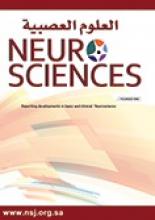To the Editor
We would like to discuss the recent publication by Tiamkao et al1 entitled ‘Factors associated with poor outcomes of hospitalized myasthenia gravis’. Tiamkao et al1 noted that “hospital category, pneumonia, and respiratory failure” are the 3 main factors associated with poor outcome. Based on the nature of a retrospective study, there are some points to be addressed. First, it cannot exclude any possible concomitant illness in the studied cases. Also, the data on “cost” in the present study should be carefully analyzed, as there were a lot of changes in the currency value in Thailand during the studied period. In addition, many previous reports mentioned the variability of clinical outcome due to pathological underlying myasthenia gravis (thymomatous versus non-thymomatous), and the methods used for treatment (medical treatment, surgical manipulation, and other techniques).2 Finally, the role of underlying genetics should also be discussed. It is reported that patients with the HLA-B8-DR3 haplotype, especially among younger, female patients usually have more severe diseases.3
Reply from the Author
No reply received from the author.
Do you have any comments or questions?Agree or disagree with published articles?
The correspondence section within the journal is a forum to comment on any of the articles published in the journal. Correspondence will not be sent for peer review, and will only be edited for the use of appropriate language. All correspondence should be submitted and published within 6 months from the date of the original publication.
Please submit your correspondence through the journal website (www.neurosciencesjournal.org), and don’t forget to clearly state the title of the original publication, and your contact details.
- Copyright: © Neurosciences
Neurosciences is an Open Access journal and articles published are distributed under the terms of the Creative Commons Attribution-NonCommercial License (CC BY-NC). Readers may copy, distribute, and display the work for non-commercial purposes with the proper citation of the original work.






